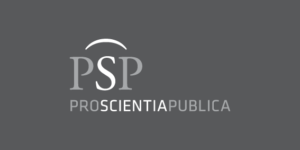Mathematics Attitude of Future Teachers of Stem Subjects
DOI:
https://doi.org/10.15503/jecs2023.2.349.362Keywords:
future teachers, mathematics anxiety, attitudes toward mathematics, motivation, enjoymentAbstract
Aim. This paper presents research aimed at testing the mathematical self-efficacy of mathematics and computer science student teachers. The aim of the presented phase of the research was to verify the effectiveness of the chosen research instrument after translation into Czech, its applicability within the specific environment of the preparation of future teachers and the design of a shorter version of the questionnaire.
Methods. 97 students of the first and second year of Bachelor's degree studies at the Faculty of Education of Charles University, specialising in mathematics and computer science, were interviewed either in a single-subject form or in combination with a second subject. Subsequently, the data was processed and evaluated using quantitative methods.
Results. The results confirmed that the test, even when translated into Czech, fully met the claim of high reliability (Cronbach's Alpha = 0.965). Using the Principal Axis Factoring method with Varimax with Kaiser Normalisation in 11 iterations, convergence to the four basic components, which were characterised as Motivation and Enjoyment, Anxiety, Self-confidence and Value, was achieved.
Conclusion. The research has shown that the chosen research instrument, the ATMI questionnaire, is fully functional after translation into English and use in the environment of preparation of future mathematics and science teachers. The first measurement data also confirms that attitudes towards mathematics are very different among future mathematics and science teachers. It also confirmed the assumption that the questionnaire has the potential to identify students who have problematic attitudes towards mathematics and are therefore at risk of dropping out.
Downloads
References
Aiken, L. R. (1974). Two scale of attitude toward mathematics. Journal for Research in Mathematics Education, 5(2), 67-71.
Aiken, L. R., & Dreger, R. M. (1961). The effect of attitudes on performance in learning mathematics. Journal of Educational Psychology, 52(1), 19-24.
Awaludin, I. S., Ab Razak, R., Azliana Aridi, N., & Selamat, Z. (2015) Causes of Low Mathematics Achievements in a Private University. Journal of Computer Science & Computational Mathematics, 5(2), 21–26.
Bandura, A. (1977). Self-efficacy: Toward a unifying theory of behavioral change. Psychological Review, 84(2), 191-215.
Benesty, J., Chen, J., Huang, Y., Cohen, I. (2009). Pearson Correlation Coefficient. In Yiteng Huang, Y., Cohen, I., Chen, J., & Benesty, J. (Eds.), Noise Reduction in Speech Processing (pp. 1-4). Springer. https://doi.org/10.1007/978-3-642-00296-0_5
Bessant, K. C. (1995). Factors associated with types of mathematics anxiety in college students. Journal for research in mathematics education, 26(4), 327-345.
Brown, T. A. (2006). Confirmatory Fator analysis for applied research. The Guilford Press.
Brezavšček, A., Jerebic, J., Rus, G., & Žnidaršič, A. (2020). Factors influencing mathematics achievement of university students of social sciences. Mathematics, 8(12), 2134.
Deitte, J. M., & Howe, R. M. (2003). Motivating students to study mathematics. The Mathematics Teacher, 96(4), 278.
Dutton, W. H. (1954). Measuring attitudes toward arithmetic. Elementary School Journal, 55(1), 24-31.
Edwards, A., Joyner, K., & Schatschneider, C. (2019). A simulation study on the performance of different reliability estimation methods. Educational and Psychological Measurement, 81(6), 1089-1117.
Gladstone, R., Deal, R., & Drevdahl, J. E (1960). Attitudes toward mathematics. In M. E. Shaw & J. M. Wright (Eds., 1967). Scales for the measurement of attitudes (pp. 237-242). McGraw Hill.
Hall, J. M., & Ponton, M. K. (2005). Mathematics self-efficacy of college freshman. Journal of developmental education, 28(3), 26.
Jaafar, W. M. W., & Ayub, A. F. M. (2010). Mathematics self-efficacy and meta-cognition among university students. Procedia-Social and Behavioral Sciences, 8, 519-524.
Khasawneh, E., Gosling, C., & Williams, B. (2021). What impact does maths anxiety have on university students? BMC psychology, 9(1), 1-9.
Lent, R. W., & Hackett, G. (1987). Career self-efficacy: Empirical status and future directions. Journal of Vocational Behavior, 30(3), 347-382.
Li, Q., Cho, H., Cosso, J., & Maeda, Y. (2021). Relations between students’ mathematics anxiety and motivation to learn mathematics: A meta-analysis. Educational Psychology Review, 33, 1017-1049.
Lin, S., & Huang, Y. (2014). Development And Application Of A Chinese Version Of The Short Attitudes Toward Mathematics Inventory. International Journal of Science and Mathematics Education, 14(1), 193-216. https://doi.org/10.1007/s10763-014-9563-8
Matos, D. A. S., & Rodrigues, E. C. (2019). Análise Fatorial. Escola Nacional de Administração Pública (ENAP).
Multon, K. D., Brown, S. D. & Lent, R. W. (1991). Relation of self-efficacy beliefs to academic outcomes: A meta-analytic investigation. Journal of counseling psychology, 38(1), 30-38.
Núñez-Peña, M. I., Suárez-Pellicioni, M. & Bono, R. (2013). Effects of math anxiety on student success in higher education. International Journal of Educational Research, 58, 36-43.
Pajares, F., & Miller, M. D. (1995). Mathematics self-efficacy and mathematics performances: The need for specificity of assessment. Journal of Counseling Psychology, 42(2), 190–198.
Perry, A. B. (2004). Decreasing math anxiety in college students. College Student Journal, 38(2), 321-325.
Schukajlow, S. (2015). Effects of enjoyment and boredom on students’ interest in mathematics and vice versa. In K. Beswick, T. Muir & J. Wells (Eds.), Proceedings of 39th Psychology of Mathematics Education conference (pp. 137–144). Psychology of Mathematics Education. Schunk, D. H. (1991). Self-efficacy and academic motivation. Educational Psychologist, 26(3-4), 207-231.
Stadler, M., Sailer, M., & Fischer, F. (2021). Knowledge as a formative construct: A good alpha is not always better. New Ideas in Psychology, 60, 100832.
Tapia, M., & Marsh, G. E. (2004). An Instrument to Measure Mathematics Attitudes. Academic Exchange Quarterly, 8(2), 16-21.
Teoh, S. H., Koo, A. C., & Singh, P. (2010). Extracting factors for students’ motivation in studying mathematics. International Journal of Mathematical Education in Science and Technology, 41(6), 711-724.
Tran, L. T., & Nguyen, T. S. (2021). Motivation and Mathematics Achievement: A Vietnamese Case Study. Journal on Mathematics Education, 12(3), 449-468.
Voňková, H., Papajoanu, O., & Boško, M. (2022). Heterogenita ve způsobu odpovídání na dotazníkové položky u českých žáků v PISA 2012: analýza dle kraje, typu a velikosti školy [Heterogeneity in the way Czech pupils answer questionnaire items in PISA 2012: analysis by region, type and size of school.] Studia Paedagogica, 27(3), 127-159. https://doi.org/10.5817/SP2022-3-5
Zakariya, Y. F. (2022). Improving students' mathematics self-efficacy: A systematic review of intervention studies. Frontiers in Psychology, 13, 986622.
Downloads
Published
Issue
Section
License
Copyright (c) 2023 Antonín Jančařík, Guilherme Stecca Marcom, Maurício Kleinke

This work is licensed under a Creative Commons Attribution 4.0 International License.
CC-BY
Authors retain copyright and grant the journal right of first publication with the work simultaneously licensed under a Creative Commons Attribution License that allows others to share the work with an acknowledgement of the work's authorship and initial publication in this journal. All authors agree for publishing their email adresses, affiliations and short bio statements with their articles during the submission process.


